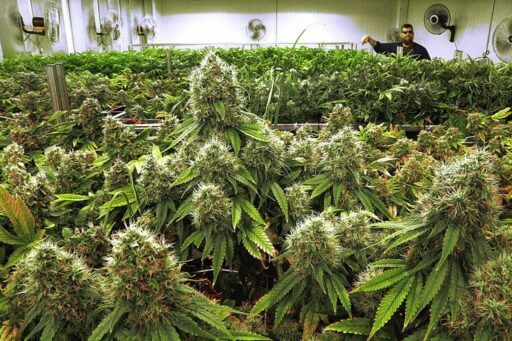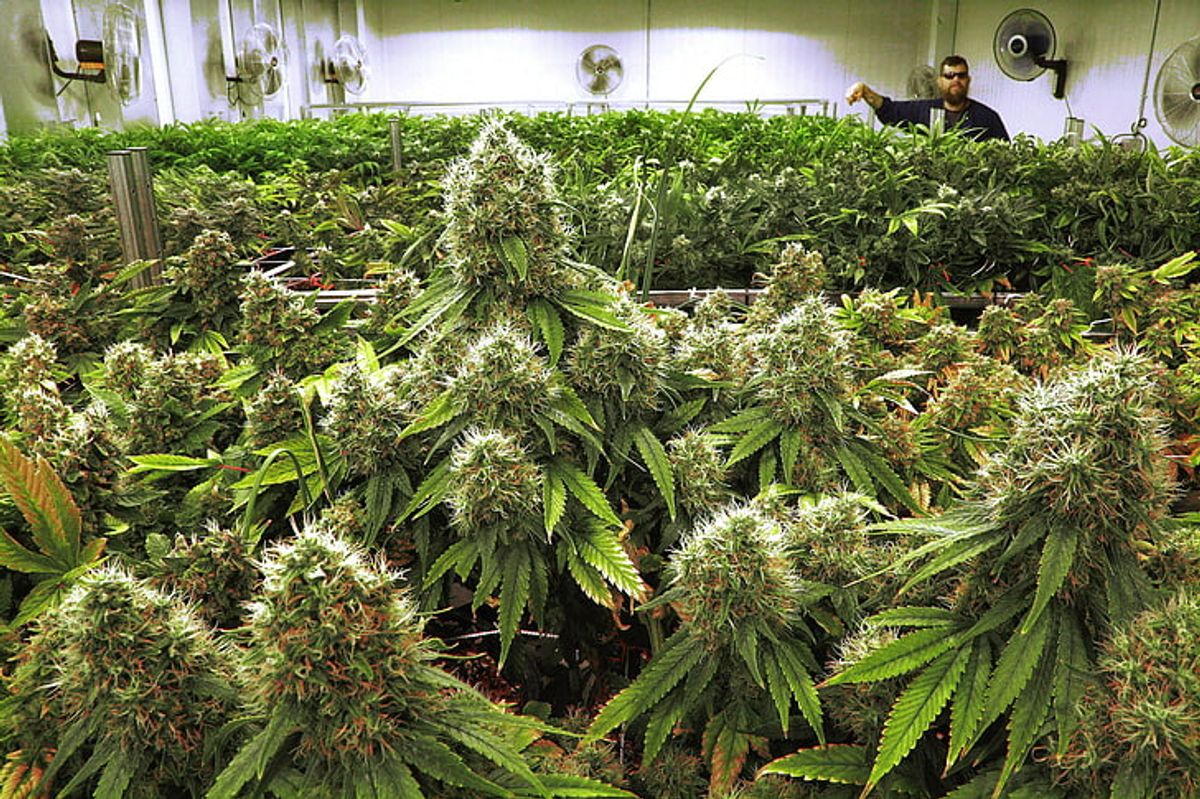The landscape of marijuana legalization in the United States has undergone significant transformation over the past decade. Trailblazing states like Colorado and Washington have led the charge, with others quickly following suit. This article delves into the states that have embraced cannabis, exploring the cultural, economic, and legislative impacts of this green revolution. From the West Coast’s burgeoning cannabis culture to the nationwide shifts in public opinion and policy, we examine how marijuana legalization is reshaping American society.
Key Takeaways
- Colorado and Washington set the stage for marijuana legalization in 2012, influencing other states and contributing to a growing acceptance of cannabis.
- The West Coast, particularly California, Oregon, and Washington, is a hotspot for cannabis culture, innovation, and tourism due to progressive legislation.
- Legalization has significant economic benefits, with states witnessing a boost in revenue from the cannabis industry and the emergence of marijuana tourism.
- Medical marijuana programs vary across states, highlighting the therapeutic potential of cannabis amid regulatory challenges and issues of patient access.
- The future of cannabis legislation is influenced by public opinion and state-level trends, with anticipation building around potential federal responses.
Trailblazers in Legalization: Colorado and Washington

Colorado’s Cannabis Industry and Cultural Impact
Colorado has been at the forefront of cannabis legalization, setting a precedent for other states to follow. The state’s cannabis industry has flourished, with Denver emerging as a hotspot for marijuana enthusiasts. The city’s diverse cannabis-related events and businesses have significantly influenced its culture and economy.
- Denver’s cannabis shops have become a staple of the city’s retail landscape.
- The state’s inclusive atmosphere has fostered a robust cannabis community.
- Elevated consumption rates in Colorado reflect the state’s pioneering role in legalization.
Colorado’s approach to integrating cannabis into its society serves as a model for economic and cultural development within the industry.
The state’s experience offers valuable insights into the potential of cannabis to drive economic growth and shape public perception. As the industry continues to mature, Colorado’s example will likely guide future policy decisions across the nation.
Washington State’s Progressive Legislation and Consumption Trends
Following Colorado’s footsteps, Washington State has been at the forefront of cannabis legalization, setting a precedent for others to follow. The state’s approach to regulating marijuana has been marked by progressive legislation, including recent efforts to address concerns over high-potency cannabis products. A bill introduced in the legislature seeks to increase the age limit for purchasing such products, reflecting a commitment to public health and safety.
Seattle, a hub for cannabis culture, has seen a flourishing of dispensaries and a welcoming social atmosphere conducive to high consumption rates. Despite this, a notable trend has emerged: Marijuana use among teens declines in Washington State, suggesting that legalization may not be leading to increased usage among young people as some had feared.
The state’s progressive stance extends beyond regulation, with a focus on integrating cannabis into the economy and society in a responsible manner. This has resulted in a dynamic market and a shift in public perceptions, with cannabis becoming a more accepted part of Washington’s social fabric.
Washington’s experience offers valuable insights into the complexities of legalization, from economic impacts to social acceptance. It serves as a case study for other states considering similar paths, highlighting both the opportunities and challenges that come with embracing cannabis.
The West Coast Green Rush: California, Oregon, and Beyond

California: The Epicenter of Cannabis Culture and Commerce
California stands as the vanguard of the cannabis revolution, not just for its legislative milestones but for the pervasive culture that has grown around the plant. Los Angeles and Northern California, in particular, have become central hubs for cannabis commerce, with a market that caters to both medical and recreational use. The state’s liberal approach to cannabis laws ensures that a vast network of dispensaries provides easy access to the plant for residents and tourists alike.
The Golden State’s cannabis industry is a tapestry of diverse landscapes and rich culture, making it a prime destination for marijuana tourism. Cities like San Francisco, Los Angeles, and San Diego are hotspots for dispensaries, cannabis-friendly accommodations, and events that celebrate legalization. This has not only fostered a robust local market but has also positioned California as a significant player on the national stage.
California’s dominance in the cannabis business is reflected in the sheer number of dispensaries, which account for a quarter of all dispensaries in the country. This saturation ensures that Californians and visitors are never far from a legal source of marijuana.
With the highest number of marijuana users in the country, California’s influence on the cannabis industry is undeniable. The state’s commitment to meeting the needs of its citizens and the thriving cannabis culture it nurtures continue to set the benchmark for others to follow.
Oregon’s Pioneering Spirit in Cannabis Innovation
Oregon has long been at the forefront of the cannabis movement, establishing a reputation for progressive policies and groundbreaking initiatives. The state’s legalization efforts have positioned it as a hub for cannabis advancements, particularly in places like Portland, where a vibrant marijuana culture thrives.
In a bold move, Oregon is set to become the nation’s first state to ban synthetic cannabinoids sold in retail outlets, reflecting its commitment to the health and safety of its consumers. This decision underscores the state’s role as a leader in policy and regulation within the cannabis industry.
Oregon’s natural charms also play a part in its cannabis narrative. The state’s scenic beauty and cannabis-friendly activities offer a unique experience for tourists, blending the allure of the Pacific Northwest with the freedom to enjoy marijuana legally.
Here’s a snapshot of Oregon’s cannabis industry:
- Progressive stance on marijuana legalization
- Elevated consumption rates and a flourishing market
- First to ban synthetic cannabinoids in retail stores
- A vibrant culture that integrates cannabis with tourism and natural attractions
The Expanding Cannabis Tourism and Lifestyle in the West Coast
The West Coast has become a beacon for cannabis enthusiasts, with states like California, Oregon, and Washington leading the charge in marijuana tourism. These states offer a plethora of experiences, from dispensaries and cannabis-friendly accommodations to guided tours that showcase the plant’s cultural significance.
In California, the cannabis tourism industry is thriving. Cities such as San Francisco, Los Angeles, and San Diego are hotspots for those looking to immerse themselves in the cannabis culture. Visitors can find a variety of dispensaries, events, and accommodations that cater to their interests.
The surge in cannabis tourism has not only provided a new avenue for travel but also a unique opportunity for cultural immersion and relaxation for enthusiasts around the world.
Oregon and Washington are not far behind, with their own unique offerings that blend natural beauty with cannabis-friendly activities. The rise of cannabis tourism is a testament to the changing travel preferences, where more individuals seek destinations that align with their lifestyle choices.
The Economic and Social Ripple Effects of Legalization

Cannabis Industry’s Contribution to State Economies
The legalization of marijuana has proven to be more than a social shift; it’s a robust economic engine. States like California and Oklahoma have become case studies in how a regulated cannabis market can stimulate job creation, increase tax revenues, and drive overall economic growth. The burgeoning industry has led to a surge in demand for cannabis-related products and services, fostering business expansion and invigorating local economies.
The cannabis industry’s emergence as a major economic force is undeniable. With dispensaries now outnumbering many traditional franchises, the sector is creating a new landscape of opportunity and challenge for states.
Here’s a snapshot of the economic impact in key states:
| State | Jobs Created | Tax Revenue Generated |
|---|---|---|
| California | 81,000+ | $1B+ |
| Colorado | 34,000+ | $387M |
| Washington | 23,000+ | $469M |
| Oregon | 17,000+ | $156M |
Drawing from the success of these trailblazers, states like Texas are considering the potential economic windfall of legalization. The establishment of a regulated cannabis industry could be a boon, not just in terms of fiscal benefits but also in fostering innovation and economic diversification.
Social Acceptance and Changing Perceptions
The landscape of cannabis in the United States is undergoing a profound transformation. A sizable majority of Americans now live in states where recreational marijuana use is legal, marking a significant departure from the prohibitionist policies of the past. This shift is not just legislative but cultural, as the normalization of cannabis consumption gains momentum across the country.
The integration of cannabis into mainstream society is evident in the juxtaposition of its use for both recreation and wellness. This trend is indicative of the broader acceptance of an industry that was once on the fringes of legality. As communities witness the benefits, including increased tax revenue and improved public amenities, perceptions are rapidly evolving. The once prevalent stigma is giving way to a more nuanced understanding of cannabis and its potential benefits.
The dialogue surrounding cannabis is no longer confined to its legality but extends to governance, freedom, and societal progress. It reflects the growing recognition of the plant’s medicinal potential and a departure from the historical stigma.
As states like Texas begin to explore the responsible use of marijuana for medical and recreational purposes, they become microcosms of the national conversation. This conversation is not only about the plant itself but also about the perceptions, attitudes, and knowledge surrounding its use, especially in regions with limited legalization.
Marijuana Tourism: A New Frontier for States
As states continue to legalize marijuana, a new type of travel has taken root: cannabis tourism. This niche market caters to those looking to combine travel with the experience of legal cannabis consumption. From 420-friendly accommodations to guided dispensary tours, the industry is blossoming, offering a unique intersection of exploration and indulgence.
The allure of cannabis tourism lies not just in the consumption of marijuana but in the rich cultural experiences and education that come with it. Travelers are not only partaking in recreational use but also learning about the plant’s history, cultivation, and culinary uses.
States that have embraced cannabis are seeing a surge in ‘ganja getaways,’ with businesses springing up to meet demand. Here’s a snapshot of the growing trend:
- California: A leader in cannabis culture, offering a wide range of experiences from luxury cannabis resorts to educational farm tours.
- Colorado: Known for its ‘bud and breakfast’ establishments and cannabis-themed events.
- Oregon: Pioneering cannabis-infused culinary classes and outdoor cannabis adventures.
As this sector expands, it’s clear that marijuana tourism is not just a passing fad but a sustainable part of the travel industry, with significant economic potential for states that have legalized cannabis.
Navigating the Medical Marijuana Landscape

States with Medical Marijuana Programs
The United States has seen a significant shift in the acceptance and regulation of medical marijuana. As of early 2024, 14 states have established medical marijuana programs, allowing patients with various conditions to access cannabis for therapeutic use. These programs often vary in terms of qualifying conditions, possession limits, and whether they accept out-of-state medical marijuana cards.
The following states have been recognized for their medical marijuana programs:
- Alaska
- Arizona
- Arkansas
- California
- Connecticut
- Florida
- Hawaii
- Illinois
- Iowa
- Maryland
- Michigan
- Minnesota
- Montana
- Nevada
- New Hampshire
- New Jersey
- New Mexico
- New York
- North Dakota
- Oklahoma
- Oregon
- Rhode Island
- Vermont
- Washington
- Washington, DC
Some states, such as Michigan and Arizona, not only provide comprehensive medical programs but also accept out-of-state medical marijuana cards, facilitating access for visiting patients.
Patients seeking to utilize their medical marijuana cards in other states should be aware of the varying laws and regulations. For instance, while some states like Hawaii welcome out-of-state cardholders, others may have more restrictive policies.
The Therapeutic Potential of Cannabis
The exploration of cannabis for therapeutic use is a rapidly evolving area of medical research. With a growing body of evidence suggesting that cannabinoids may offer alternative treatments for a variety of conditions, the medical community is paying close attention to the potential of cannabis-derived compounds.
While the debate on the efficacy and safety of cannabis continues, its potential to serve as a substitute for opioids in pain management has been a focal point of recent studies.
However, concerns have been raised about the risks associated with cannabis use, including the possibility of heart rhythm disorders in chronic pain patients and the need for more research into the long-term effects of cannabis on mental health. Despite these concerns, the National Institutes of Health (NIH) has committed funds to investigate minor cannabinoids and terpenes for their pain-relieving properties, signaling a significant interest in the medicinal applications of cannabis.
The therapeutic potential of cannabis is not without its complexities. As research progresses, the complete list of updated research on therapeutic potential, including the various cannabinoid profiles or "chemotypes," can be found in Appendix A of the latest publications.
Regulatory Challenges and Patient Access
The journey towards comprehensive medical marijuana programs is fraught with regulatory challenges that impact patient access. States vary widely in their acceptance of out-of-state medical marijuana cards, creating a patchwork of policies that can confuse and hinder patients seeking legal cannabis treatments. This inconsistency necessitates that patients remain vigilant and informed about the regulations in each state they visit.
The presence of dispensaries is crucial in democratizing access to cannabis, providing safe and legal options for patients and consumers alike. Their role extends beyond health, contributing to the economic vitality of communities.
Despite recent legislative advancements, such as the easing of federal restrictions on medical marijuana research, patients still face hurdles. Access to cannabis for managing symptoms, especially for cancer patients, is not equitable across the board. Studies indicate that the same disparities affecting healthcare in general also apply to medical marijuana access.
As the dialogue around cannabis policy evolves, so does the potential for more states to adopt reciprocal acceptance of medical marijuana cards. Patients, advocates, and policymakers are integral to this process, striving for a unified and patient-centric approach to cannabis access nationwide.
The Future of Cannabis Legislation in the U.S.

Emerging Trends in State-Level Legalization
The legal position of recreational marijuana in the United States has undergone significant transformation, with a majority of Americans now residing in regions where its use is legal. The shift from prohibition to broad legalization has been marked by the pioneering efforts of states like Colorado and Washington, setting a precedent for others to follow.
In the wake of these changes, the cannabis industry has become a formidable economic force. Dispensaries are now more prevalent than some of the country’s most recognizable brands, indicating a shift in both market dynamics and social norms. This economic influence is underscored by the fact that around three-quarters of all dispensaries are located in states with legalized recreational marijuana use.
The widespread acceptance and integration of cannabis into local economies and communities reflect a changing landscape where regulation and public health are at the forefront of policymakers’ agendas. As the industry evolves, the challenge remains to balance economic benefits with responsible governance.
The Role of Public Opinion in Shaping Laws
Public opinion has proven to be a powerful force in the evolution of cannabis legislation in the United States. As states like Colorado and Washington set precedents with their historic votes in 2012, a nationwide dialogue on cannabis policy was ignited. The Pew Research Center’s studies have been pivotal in capturing this shift, revealing a more nuanced picture of Americans’ views on marijuana.
The interplay between public sentiment and legislative action cannot be overstated. With 74% of Americans residing in areas where marijuana is legal for medical or recreational use, the public’s understanding of cannabis’s multifaceted role is evident. This awareness is not only shaping laws but also influencing broader themes of governance and societal progress.
The legalization of marijuana serves an important role in improving public health and safety, as well as bolstering the economic prosperity of communities by providing a regulated outlet for cannabis.
The following table highlights the percentage of Americans living in areas with legalized marijuana, underscoring the widespread impact of public opinion on policy:
| Legalization Type | Percentage of Americans Affected |
|---|---|
| Medical Marijuana | 74% |
| Recreational Use | 74% |
As the landscape continues to evolve, the role of public opinion will remain central to the development of cannabis laws, reflecting a collective understanding of its broader implications.
Anticipating Federal Responses to State Legalization
As states continue to adopt their own cannabis policies, the anticipation of federal responses grows. The federal government’s stance on marijuana remains a significant factor in the evolution of state laws and the cannabis industry as a whole. While some states have been pioneers in legalization, others have followed suit, creating a patchwork of regulations that could prompt federal intervention.
The complexities of the current legal landscape suggest that a unified federal approach could streamline regulations and reduce conflicts between state and federal laws.
Federal responses may range from continued enforcement of existing federal laws to comprehensive legislative reform. The following points outline potential federal actions:
- Monitoring and enforcement of interstate cannabis trafficking
- Reevaluation of cannabis scheduling under the Controlled Substances Act
- Support for research into the health benefits and risks of cannabis
- Development of banking and tax regulations for the cannabis industry
The dialogue between state and federal entities is crucial for the future of cannabis legislation. It will determine how the industry can operate within the confines of the law while meeting the needs of consumers and businesses.
Embracing the Green Wave: The Future of Cannabis in the U.S.
As the United States continues to ride the green wave of marijuana legalization, the landscape is undeniably changing. With over half of the states, including the District of Columbia, having legalized marijuana in some form, the nation is witnessing a significant shift from the days of stringent prohibition. The top five states—Colorado, Washington, Oregon, Nevada, and California—not only reflect the highest rates of cannabis usage but also play pivotal roles in shaping the cultural and economic impact of the industry. As more states join the movement and the public’s perception evolves, the integration of cannabis into various sectors of society is becoming increasingly apparent. The future holds a promise of further acceptance, innovative advancements, and a potential reimagining of the role of cannabis in American life.
Frequently Asked Questions
Which states were the first to legalize recreational marijuana?
Colorado and Washington were the trailblazers in legalizing recreational marijuana in 2012.
How many states have legalized recreational marijuana?
As of the latest information, 24 states along with the District of Columbia have legalized recreational marijuana.
Are there any states that only allow medical marijuana?
Yes, 14 states have approved the use of marijuana for medical purposes only.
What are the top five states known for cannabis-friendly culture?
The top five states known for their cannabis-friendly culture are California, Colorado, Washington, Oregon, and Nevada.
What percentage of the American population lives in states where recreational marijuana is legal?
55 percent of the American population now resides in areas where recreational marijuana is legal.
What impact has the legalization of marijuana had on tourism?
Legalization has led to the emergence of marijuana tourism, with states like California, Oregon, and Washington offering dispensaries, cannabis-friendly accommodations, and guided tours, attracting visitors interested in cannabis culture.





